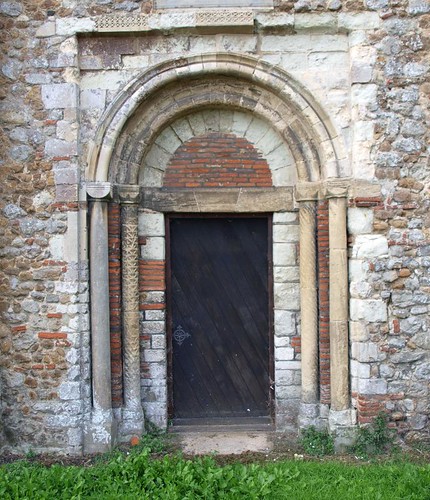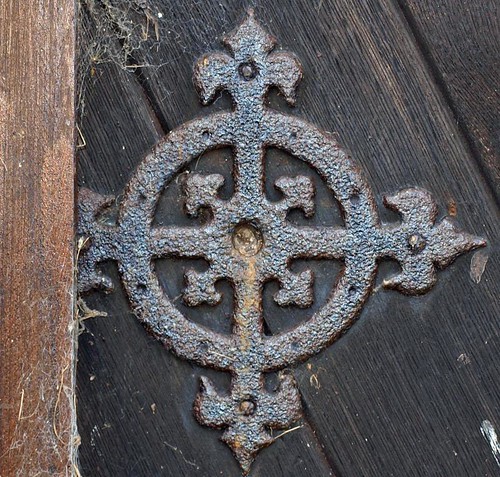St John the Baptist is locked with no keyholder listed but does have a useful sign advising that it's open on Mondays and Thursdays between 12.30pm and 2.30pm. This is essentially a badly restored Norman church - the best feature being the North and South doors; I shudder to think what's been done inside.
ST JOHN THE BAPTIST. A Norman church and quite remarkable for a village, though badly ill-treated by Hakewill in 1865. Due to him the E front, even more painful inside than outside. Due to him also all the window detail. The Norman church must always have been very impressive in size, tall and wide, as the proportions of the chancel arch prove. The broad flat outer buttresses are also remarkable. Do they indicate an original intention to vault (cf. Copford)? The windows too seem to be correct at least in their unusual size. S doorway with two orders of columns and two roll-mouldings in the arch; all renewed. N doorway of similar design, but two of the columns decorated with carved diaper (or star) and spiral motifs. The chancel was rebuilt in the C14, the W tower in the C15, replacing, it seems, a belfry the tiebeams of which were kept. The W tower has angle buttresses and a three-light W window. It was not completed, and later a weatherboarded upper storey was added. On this, thin early C19 pierced parapet with battlements and a pyramid roof. - FONT. Octagonal, with three seated figures and two angels holding shields; defaced; C15.
GREAT CLACTON. A place of great antiquity, it is Roman, Saxon, and Norman. Saxon graves have been found, and Roman tiles stand out among the flints and stones of the Norman church. In the village is a thatched cottage of the 17th century and an inn with timber-framing and moulded ceiling beams of the Elizabethan age. From a bend of the wide road a fine avenue of 16 lime trees runs through the great churchyard to a Norman doorway under a Norman window. The doorway in the other wall has 12th century pillars. The font, with carvings of two angels and of three seated figures, is about 500 years old, contemporary with the massive stone tower, on which is set a timber belfry with a dumpy spire. The student of architecture will delight in the traces of rare vaulting in the roof of the nave.
A tablet on the wall tells us that Eleazor Knox was vicar to his death in 1591. He was born at Geneva in 1558, when his father was living there in exile, his father being the immortal John Knox.
A tablet on the wall tells us that Eleazor Knox was vicar to his death in 1591. He was born at Geneva in 1558, when his father was living there in exile, his father being the immortal John Knox.



No comments:
Post a Comment